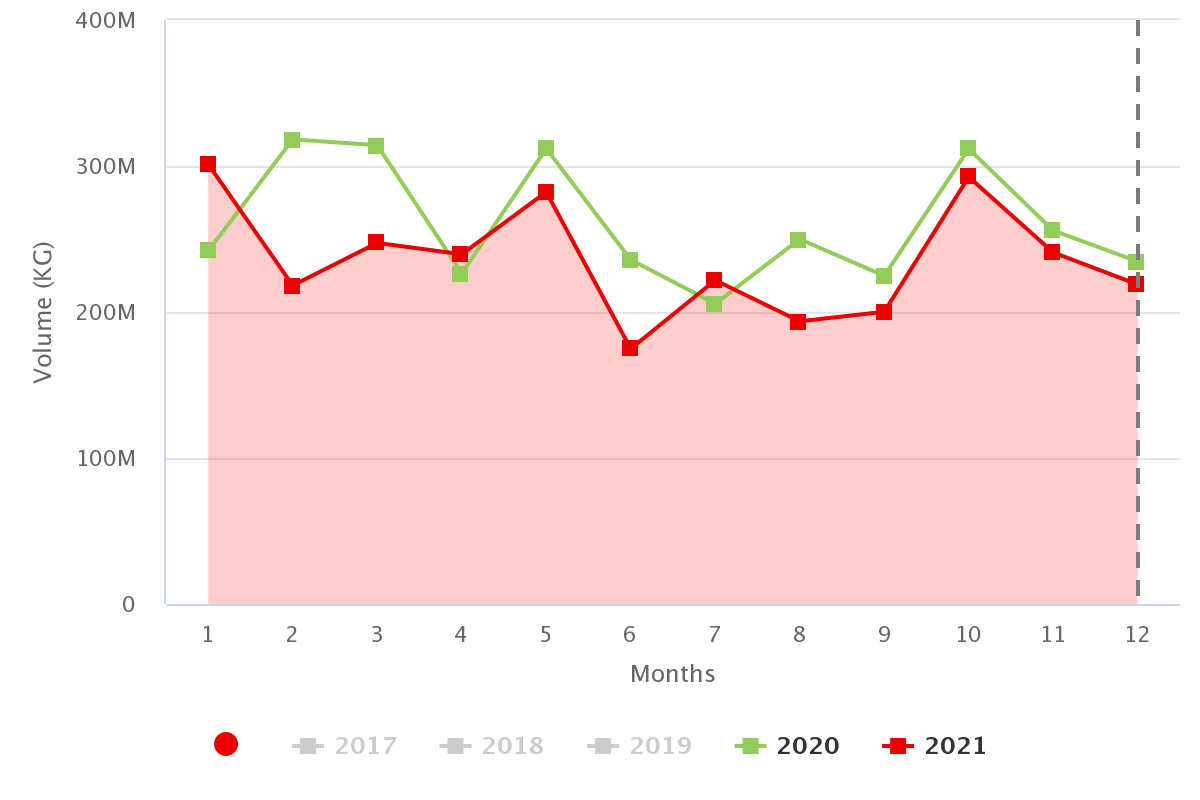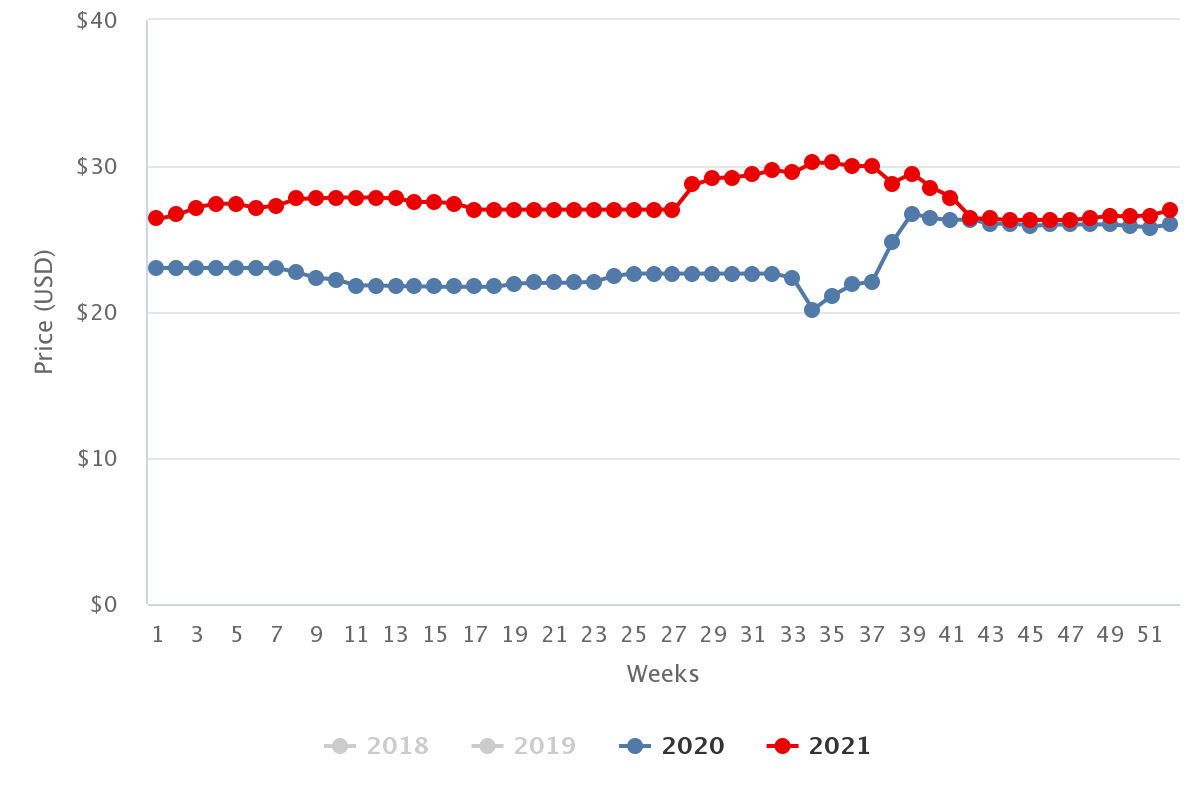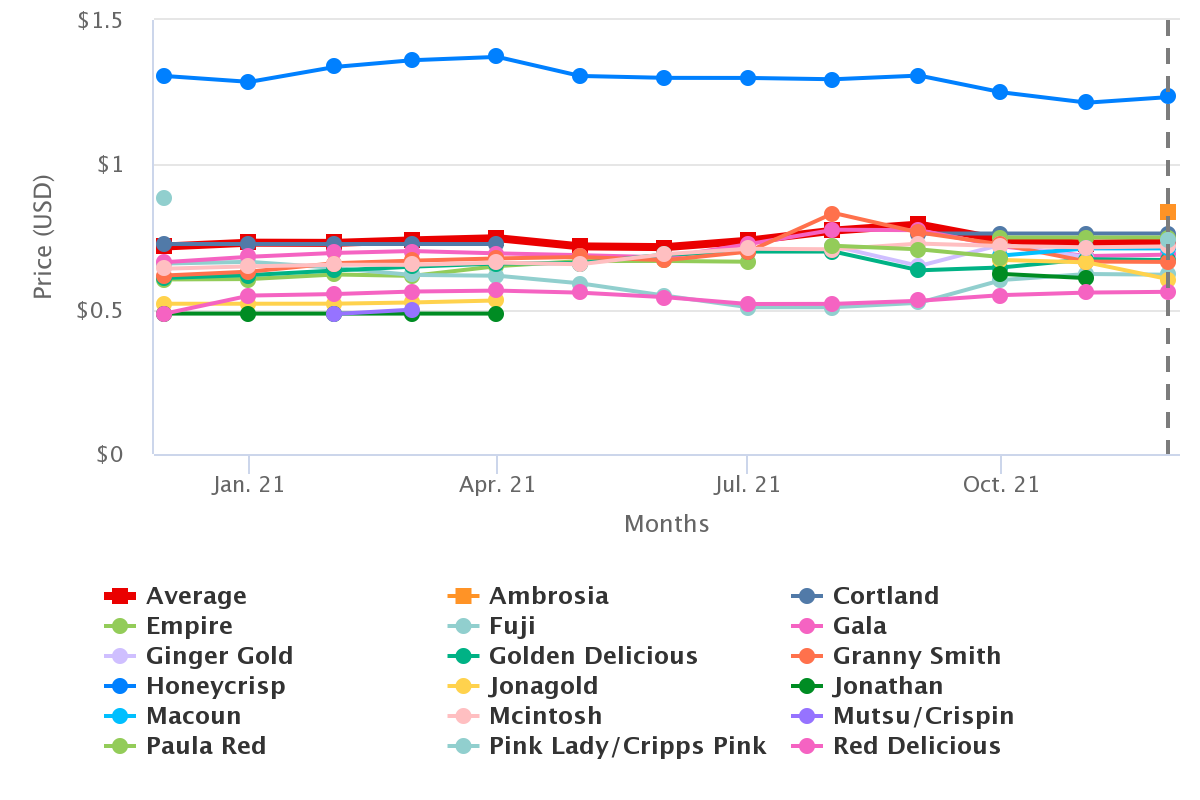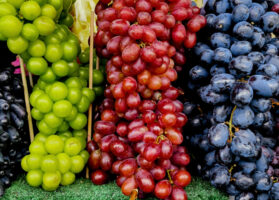Shorter apple crop changes promotion mindset
Overview of apples from Washington in the U.S. market, complemented by charts from Agronometrics. Original published on January 03, 2022.
A shorter apple crop and inflationary supply chain pressures have changed the feel of the 2021-22 apple compared with a year ago.

Source: USDA Market News via Agronometrics.
(Agronometrics users can view this chart with live updates here)
Industry leaders say the reduced output nationwide has dampened promotion opportunities compared to a bumper crop year.
“Inflation across the supply chain and the supply chain constraints on everything from containers to packing supplies have been big challenges compared to a year ago,” said Brianna Shales, marketing director for Wenatchee, Wash.-based Stemilt Growers.
“It’s not unique to the apple market but is certainly impacting the ability to be nimble in our promotion activities.”
The USDA reported Dec. 29 that shipping point prices for Washington size 88 gala apples were $26 to $28 per carton, up from $24 to $26 per carton a year ago. At $20 to $22 per carton, red delicious size 88 prices were also up about $2 per carton compared with a year ago.

Source: USDA Market News via Agronometrics.
(Agronometrics users can view this chart with live updates here)
For the week of Dec. 24, the USDA reported that the average promotion prices for apples in grocery stores was $1.45 per pound, up from $1.30 per pound on Jan. 1 a year ago.
The average weekly number of U.S. grocery stores promoting apples from Aug. 1 to Dec. 15 in 2021 totaled 53,462, down 22% from an average of 68,010 stores per week in the same period a year ago.
For the week of Dec. 24, the USDA reported that the average promotion prices for apples in grocery stores was $1.45 per pound, up from $1.30 per pound on Jan. 1 a year ago.
The average weekly number of U.S. grocery stores promoting apples from Aug. 1 to Dec. 15 in 2021 totaled 53,462, down 22% from an average of 68,010 stores per week in the same period a year ago.
“There are fewer promotions due to reduced national crop size,” said Trish Taylor, marketing manager for Riveridge Produce, Sparta, Mich. Taylor said consumer trends have remained fairly consistent, with preferences toward prepackaged and grab-and-go options.
Chuck Sinks, president of sales and marketing for Yakima, Wash.-based Sage Fruit Co., said the biggest change this season compared with a year ago is the overall crop available.
“Last season was down from the previous year, and this year is down just a bit more,” Sinks said.
Difficult growing conditions in Washington, the Midwest and New York contributed to reduced potential of the 2021 crop, said Don Roper, vice president for Honeybear Marketing, in Brewster, Wash.
“From early frost to unprecedented heat spells, it seems this year, the apple industry received about every punch Mother Nature wanted to throw,” Roper said. “This has had a direct impact on overall production and quality of our crop.”
Roper said another big challenge has been increased costs for labor and production inputs such as fuel, packaging and fertilizer.
“The list has been endless, and it is putting a very big compression on margin for growers and packers,” Roper said, noting that the escalation in costs is serving to accelerate adoption of new technologies, orchard and packing house automation, and conversion or removal of underperforming orchards.
In some cases, foreclosure of farms and businesses has occurred, Roper said.
“Perhaps (there is) not a huge change from a year ago, but it sure feels like the velocity of change has increased,” Roper said. “We will need to have very productive farm operations, low-cost operators and (focus) on growing and marketing the varieties that help keep the farms profitable and able to keep reinvesting in varieties that will resonate at retail and drive retail sales.”
Another shipper agreed that current conditions require a focused approach.
“The cascading impact of production delays coupled with rising costs and labor shortages continues to change the way we approach our business,” said Rochelle Bohm, brand manager for Wenatchee, Wash.-based CMI Orchards. “Packaging costs are through the roof, in some cases doubling and tripling in pricing and lead times.”
Because of supply chain constraints, promotions are increasingly difficult to plan around unpredictable packaging production delays, Bohm said. CMI is responding to challenges with innovation centered around sustainability, she said.
“Automation is the best way for us to reach sustainability, lessening reliance on labor and increasing production speed,” Bohm said. “As producers of one of the most popular items in the produce department, the apple industry is one that has a long history and bright future ahead, and CMI is well positioned to meet any challenges we’re faced with.”
Marketing outlook
Despite any impact last summer’s heat may have had on the quality of apples coming out of storage, optimism that fruit quality will support continued promotions into the summer months remains prevalent among marketers.
“There may be some issues related to storage quality and the heat, but most varieties fared well because of when they were harvested and how far along in the growing cycle when the heat arrived,” Shales, of Stemilt Growers, said. “The qualities of the crop are strong overall, with great color attributes. We feel like there are good promotion opportunities on both organic and conventional fruit that will extend into the summer months.”
Bohm said the supply complications of the heat wave, paired with labor shortages, delivered a shorter crop than normal. Quality control staff will work to make sure fruit quality stays strong, she said.
“We are working hard to make sure that we can cover the needs of our customers,” she said, noting that new partnerships between CMI and other warehouses have boosted the company’s output by 4 million cartons this year.
Roper, of Honeybear Marketing, said there is a good chance the industry could see some reduced packouts because of hot weather last summer.
“In general, that should not affect the quality of fruit that we get into our finished packs,” he said. “With internal and external sorting capabilities at all of our facilities, we are able to ensure high-quality fruit is packed to meet our customers’ expectations. We will see lower packs per bin, but final quality on the store deck should be what our retailers expect.”
While volume could be less than earlier anticipated, Roper said the industry has been discussing that possibility for some time.
Sinks, of Sage Fruit Co., said the heat in the Northwest this past summer was unprecedented.
“We’ve seen a few issues with fruit quality so far; however, we have also invested in the latest packing technology to help sort those defects out,” he said. “As we get further along in the season and begin to open more controlled atmosphere (CA) storage, we’ll be keeping a close eye on fruit quality and potential damage caused by the extreme heat.”
As of late December, Sinks said no one can be sure how those CA rooms will open up and what effect the heat might have going forward.
“This is new to all shippers to be dealing with the extreme heat fruit coming out of storage,” Sinks said.
Variety twist
The shorter crop year for some varieties allows Riveridge Produce to focus on newer varieties, such as Ambrosia, Evercrisp and SnapDragon, Taylor, of Riveridge Produce, said.
“It also provides us an opportunity to experiment with smaller campaign themes around apples,” she said.
Shales, of Stemilt Growers, said the reality of a shorter crop will translate to tighter supplies of some varieties, including popular gala apples.
“However, there are other varieties that will have more promotion opportunities, especially compared to last year,” she said. “Regular promotions are key to apple category success, especially during a shorter crop, and so it’s important that retailers take advantage of the varieties where there are opportunities.”
Shales said Honeycrisp, fuji, Pink Lady and granny smith are a few core varieties that are promotable.

Source: USDA Market News via Agronometrics.
(Agronometrics users can view this chart with live updates here)
“Cosmic Crisp is still rising into the core category but going to be a bigger part of winter (and) spring as it continues to build in volume and momentum with consumers,” she said.
In general, Roper said the industry can expect fewer ads and industry promotions.
“More importantly, we can expect overall retail prices to be higher this year due to both less supply and increase costs of goods associated with every facet of the growing and production process,” he said. “From labor and fuel increases to packaging and handling charges, we are seeing unprecedented upward price pressure.”
Even with those challenges, Roper said each grower-shipper is in a little bit different position and will experience different opportunities and challenges from variety to variety.
Sinks said the apple supply may tighten up throughout the winter and spring.
“Our goal is to make sure we have high-quality, year-round availability for our loyal retail partners,” he said. “Our primary goal is to take care of the retail partners that are loyal to Sage Fruit so that they have consistent supply.”
The News in Charts is a collection of stories from the industry complemented by charts from Agronometrics to help better tell their story.
Access the original article with this (Link)






